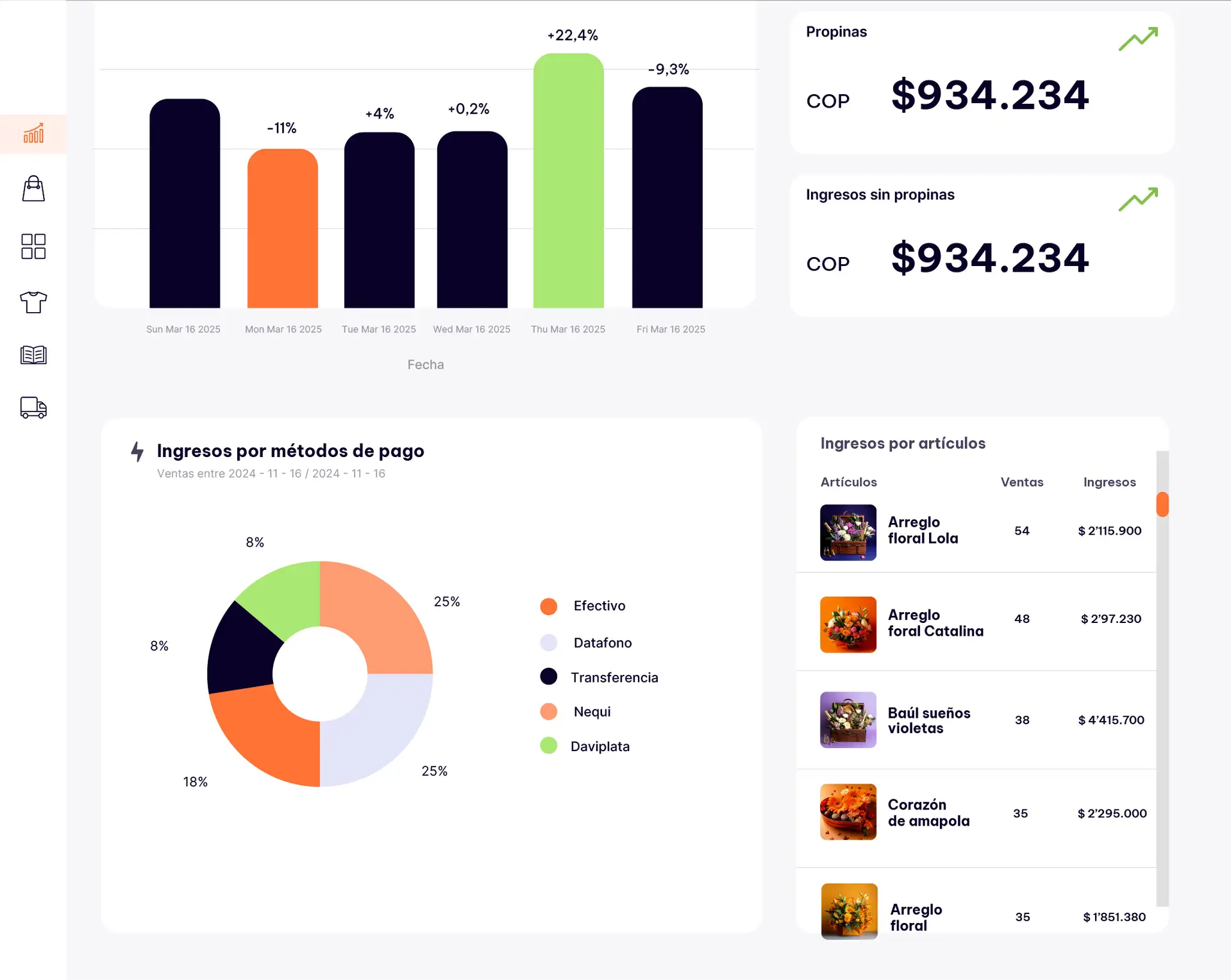Introduction: The Team Behind the Counter Is Everything
When you walk into your favorite neighborhood store, what makes you come back again and again?
Maybe it’s the warm smile of the cashier, the way someone remembers your name, or how fast and organized everything feels even on busy days. Most customers don’t think about it, but behind that smooth experience is a team. And whether that team is made of two people or twenty, it can make or break the store.
The reality is that most small retail businesses underestimate the power of their team. They hire in a rush. They don’t define roles. They expect commitment without clarity. And then they wonder why the store feels chaotic, why there are constant mistakes, or why customers stop coming back.
Building a strong retail team isn’t about copying what big chains do—it’s about intentionally crafting the people part of your business to reflect your values, improve your customer experience, and make your operations smoother.
In this article, we’ll walk through the practical steps to build, train, and lead a team that grows with your store. We’ll talk about how to hire right from the beginning, how to assign roles that matter, how to lead with clarity, and how to handle inevitable problems like miscommunication or high turnover. You don’t need a degree in management to build a great team—but you do need structure, intention, and a willingness to improve.
Let’s start from the beginning: who you choose to hire.
1. Hiring Right: The First Brick in a Strong Foundation
One of the most common mistakes in small retail is hiring out of desperation. Someone quits, and you’re understaffed, so you hire the first person who seems available. But the wrong hire doesn’t just affect productivity—it affects your culture, customer experience, and even your own peace of mind.
So what should you look for when hiring?
A. Skills can be trained, but attitude can’t.
In retail, soft skills matter as much as technical skills. You want someone who can listen, stay calm under pressure, and smile genuinely. Yes, product knowledge is important—but you can teach that. What you can’t teach easily is emotional intelligence.
B. Cultural fit matters.
Your team should reflect your store’s values. If your brand is cheerful and energetic, hiring someone cold or passive creates tension. This doesn’t mean everyone should be the same, but there should be alignment in values and energy.
C. Ask better questions.
Instead of just asking “What experience do you have?”, ask “Tell me about a time you solved a customer problem” or “How would you handle a situation where a coworker is running late and you’re alone with three waiting clients?”
D. Try working interviews.
If possible, invite candidates to do a short trial shift. This helps you observe real behavior—not just interview performance. It also gives them a chance to see if your store is a place where they’d like to grow.
Practical Exercise:
Create a simple hiring checklist for your store. Include:
- 3 key traits you want in every hire
- 2 interview questions that test real-world scenarios
- 1 task or trial you could include in your hiring process
Use this checklist consistently for every new hire.
2. Roles, Responsibilities, and Retail Rhythm
A great team doesn’t mean everyone does everything—it means everyone knows exactly what they’re responsible for. In too many small stores, roles are blurred, which leads to stress, duplicated work, and dropped balls.
Here’s how to define and distribute responsibilities for better flow:
A. Name the core roles in your store.
Even if you only have 2–3 people, identify what hats need to be worn: cashier, stock manager, customer experience lead, cleaning and organization, etc. A person can hold more than one role—but the role should be clear.
B. Write micro job descriptions.
Forget fancy HR documents. Just take 5 minutes per role and write:
- What success looks like in this role
- What tasks are daily vs. weekly
- What decisions this person can make without approval
C. Rotate to prevent burnout.
If you have enough people, consider rotating tasks weekly. Someone might handle stock this week and front desk next week. It keeps skills balanced and prevents monotony.
D. Communicate expectations.
Before the start of every week (or shift), do a quick team huddle: “Here’s what each of us is focusing on today, and here’s how we’ll support each other if something unexpected happens.”
E. Use visual tools.
Even a whiteboard with names and roles per day helps keep everyone aligned. Clarity improves teamwork.
Practical Exercise:
Draw a simple weekly team schedule.
- Map out who covers which role each day
- Include 1 backup person for each role
- Post it in a visible place in your store
Then, test it for a week and ask your team: What worked? What needs adjusting?
3. Leading by Example: What You Do Matters More Than What You Say
Retail leadership isn’t about barking orders—it’s about modeling the behavior you want to see. In small teams, especially, your actions set the tone for everything: punctuality, attitude, problem-solving, and even how customers are treated.
Let’s look at what leading by example means in practice:
A. Show respect, always.
Say “please” and “thank you.” Celebrate effort. Correct mistakes privately. If you expect your team to be kind to customers, you must be kind to them first—even when under pressure.
B. Admit mistakes.
If you mess up, own it. Your team will respect your honesty and be more likely to take responsibility themselves.
C. Stay calm in chaos.
Retail gets hectic. If you panic when the store gets packed or when systems fail, your team will mirror that. Stay steady. Focus on solutions.
D. Do the dirty work.
Don’t just assign tasks—be willing to jump in. Clean a spill, restock shelves, take a tough customer. When your team sees you working alongside them, it builds trust and motivation.
E. Be present.
Even if you’re not in the store full time, check in. Ask questions. Give feedback. Offer support. Physical absence shouldn’t mean emotional or operational absence.
Practical Exercise:
This week, write down three behaviors you want to model more clearly (e.g., staying calm, recognizing good work, being punctual). Then, share with your team: “Here are three things I’m working on as a leader.” It builds accountability—and sets the tone.
4. Conflict, Communication, and Culture
Every team will face tension. The difference between strong and weak teams is how they handle it. If conflict is ignored, it festers. If communication is poor, mistakes multiply. If culture is not intentionally built, it defaults to whatever happens organically—which is rarely great.
Here’s how to nurture a healthy, conflict-resilient team:
A. Set ground rules.
From day one, make it clear how people are expected to communicate. Use respectful language. Assume good intentions. Raise issues early, not when they explode.
B. Don’t play favorites.
Even if you’re closer to one team member, make decisions based on fairness. Playing favorites damages morale and often leads to more conflict.
C. Create safe spaces to speak up.
Have regular (even short) check-ins where team members can share concerns without fear. A 15-minute chat each week can prevent much bigger issues.
D. Train for conflict resolution.
You don’t need a corporate manual. Just agree on simple steps: Listen first, repeat back to confirm, offer a solution, escalate if needed.
E. Celebrate culture wins.
Highlight moments when your team lives out your values: someone going the extra mile, covering for a colleague, calming a difficult customer. Culture isn’t what’s painted on a wall—it’s what people do when no one’s watching.
Practical Exercise:
Create a “Team Communication Agreement” with your staff. Include:
- How to give feedback
- How to handle disagreements
- When to escalate an issue
Print and post it in the break area. Revisit it monthly.
5. Growing Together: Training, Feedback, and Retention
A strong team isn’t built overnight—and it never stops evolving. Great leaders invest in their people. Not just with money, but with time, attention, and growth opportunities. This doesn’t mean complex programs. It means daily micro-investments.
A. Onboard with intention.
Don’t just throw new hires into chaos. Give them a clear path: first shift they observe, second shift they assist, third they lead a task. Give context, not just instructions.
B. Give feedback weekly.
Waiting until someone messes up to give feedback is reactive. Instead, create a rhythm: “Here’s what you did great. Here’s one thing to tweak.” Small, regular adjustments avoid big issues later.
C. Ask for feedback, too.
What do they think could be improved? What frustrates them about the tools or processes? Employees who feel heard are more loyal.
D. Create micro-growth paths.
Even in small stores, you can give a cashier a chance to lead inventory one day a week. Or let a junior staffer mentor the next hire. Growth doesn’t mean promotion—it means trust and responsibility.
E. Say thank you often.
Recognition doesn’t have to be expensive. A simple note. A team lunch. A social media shoutout. Appreciation fuels motivation.
Practical Exercise:
Choose one team member this week and ask:
“What’s something you want to learn or try here that you haven’t yet?”
Find a way to support that goal in the next 30 days.
Final Reflection: Great Stores Are Built by Great People
You can have the best product, the smartest pricing, and a beautiful store—but without the right people working together, it will eventually fall apart.
And yet, your team can become your greatest competitive advantage. When you hire intentionally, lead with empathy, define clear roles, and foster a culture of growth, something magical happens: your store doesn’t just work—it thrives. People stay longer. Customers feel the difference. And most importantly, you stop feeling like you’re carrying the whole store on your back.
This doesn’t mean you’ll never face team problems. You will. But now, you’ll have the tools—and mindset—to face them with confidence.
Remember: your team is your brand. Every smile, every conversation, every behind-the-scenes decision reflects who you are as a business. Lead well. Hire with heart. Build the culture you wish you had when you started.
Your future store—and team—will thank you.





